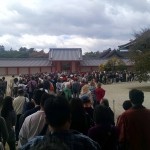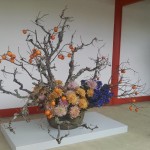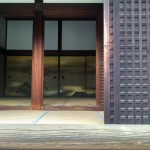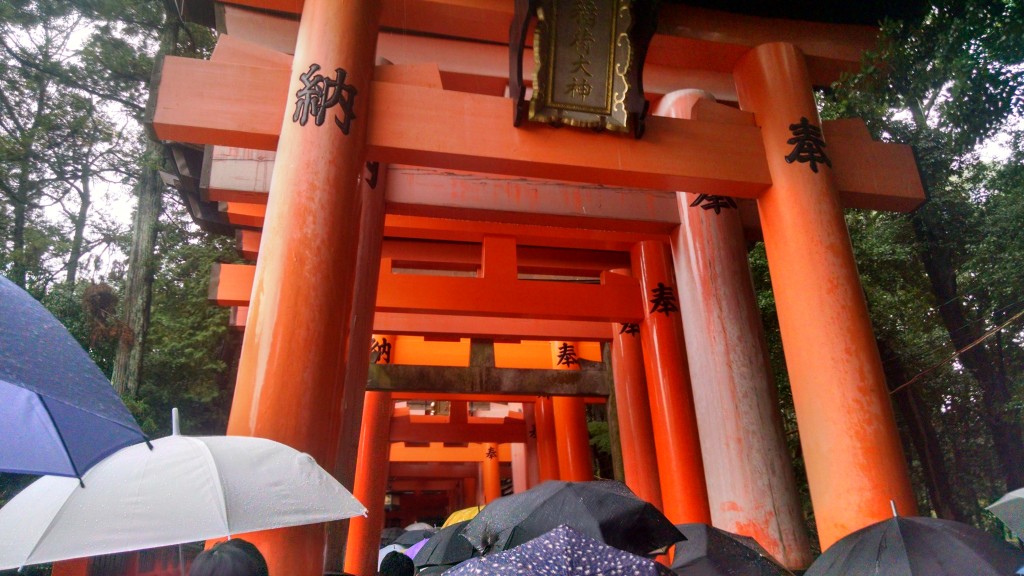Hi all,
This past week was slow to start, but ramped up as we approached the weekend. There were a couple photoheavy moments, but the weekend was mostly full of interaction with new people and in new settings. If you’re here for the multi-media, don’t worry. It’s at the beginning and the end. I think there’s a little bit of everything for people in this one, though.
On Thursday I found myself walking through the grounds of the Kyoto Imperial Palace. I always pass it when I walk to and from school, but this is the first time I had ever walked inside the grounds. And probably the first time for many other people. It’s normally difficult to get inside. There’s high walls that surround the grounds and you can usually only get in with reservations made in advance, and that costs money. The palace grounds are open for just a few days each year for free, and I decided to go on the last day it was open. It was just a 2 or 3 minute walk away from campus.
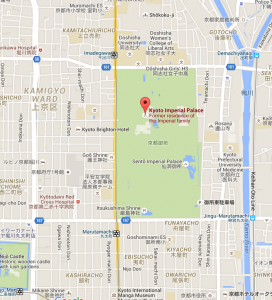
The Imperial Palace area is massive. Many many city blocks. A public park surrounds the inner palace grounds.
The first thing you should know about the inner palace grounds: they’re massive. The second: if you go the last day they’re open, it’s packed. Me and two other friends entered the palace grounds after having our bags checked, and we were all floored by what we found inside. What we’d all been passing every day. Also by the amount of people, of whom a large portion were foreigners.
The Kyoto Imperial Palace was used as the residence of the Imperial family until 1869, when it moved to Tokyo (it’s still in Tokyo). It still felt like it had that old-world charm. Not super old, since most buildings have burned down many times in Japan, but there was a sort of mid-19th century vibe about the place. I decided that since it’s rare to be able to see inside, I might as well take a few pictures. I ended up taking pictures for a few other people as well.
- Great colors on this building.
- I noticed that space was a huge part of the layout. Just empty space. This massive courtyard was filled with nicely arranged pebbles, but nothing else. There was a certain sort of elegance about that.
- There were many seasonal arrangements on display. Each one changed if you looked at it from even a slightly different angle. Pictures obviously don’t do this one justice.
- Crazy to think I pass this place every day.
- I really started to appreciate the aesthetic of gold. When it’s seen in dark lighting, it’s not ostentatious at all. In fact, it’s the only way you can get white clouds or snow. White paint just turns grey in the shadows.
- Fall is really starting to show even here, where it seems everything else is shut out.
What people had opened for us was amazing, but what was also amazing to see was what was always open: the gateways and doorways. I started to notice how amazingly they framed the nature around the palace grounds as you approached them. Each gate or doorway framed a painting, it seemed. And it was uncanny how perfectly curated each image was that these doorways and gateways framed. It destroyed the distinction that so many grandiose buildings have: that there’s a carefully kept garden or lawn that’s separate from the building. Nature is an essential part of this palace, and the palace allows you to appreciate nature in return.
Friday was so fun. On Thursday night, a friend (Sean) asked if I was free on Friday afternoon to help his host mom out. She’s a professor at a local university (Ritsumeikan) and she wanted a few AKP friends to come to her English class and help out a bit. It sounded like a good experience.
The commute from Doshisha was about an hour and a half. and it took us into the mountains. We were met at the bus stop by a few Ritsumeikan students with a “Sean” sign. The campus was beautiful. They showed us to Sean’s mom’s classroom and Sean’s mom explained how we would be helping. All her students were science majors and they need to learn how to write academic papers in English. That day, we’d be helping them flesh out their first paragraph. We got comfortable and waited for the students to arrive.
When the time came, students started passing by the classroom and trying to come in–but more often than not, they were so surprised to see 5 foreigners that they collapsed into giggles and gasps and backed out of the room. Sean told me that his mom had apparently built up this day for about a month before we all came to her class. After about 10 minutes, people finally settled down enough to start class and we all did our typical self-introductions, but this time in English.
We were bunched into groups of 3 students and 1 foreigner and we started. They all put their first paragraph into one long document and I went around the circle reading each of their paragraphs, giving them advice. I also tried to do it in English as much as I could, because I figured it was good listening comprehension for them. There’s not a lot of opportunity to interact with a native English speaker in a learning environment in Japan. By explaining things in English and helping them figure out the best translations, it was actually a great way for me to learn more Japanese too.
One of the first things I noticed was that everyone’s paper’s made sense and actually had very strong theses, but very few of them were actually in paragraphs. One person’s was spit into three mini-paragraphs, while another made a new paragraph almost every time he started a sentence. This wasn’t a big deal because it was easily fixed, but they all seemed surprised when I pointed this out to them. Of course there were some grammatical question-marks, but most of it just sounded unnatural rather than incomprehensible. I made sure to tell them this. A couple of times Sean’s mom came over to check in with us and translate a bit of what I was saying if it was tough to get my point across. She kept telling me I was a “nice sensei” with a chuckle, and both words surprised me. I suppose I was being nice to them, but I was more impressed. Most of their papers were really good and clearly thought out. And sensei? That’s the first time I’ve been called that. It was a trip. By the end of the session I did end up providing a few “Ah!” moments, like useful synonyms (But~Although) and links to Japanese language. The students told Sean’s mom what I helped them with, and all of a sudden I wasn’t just a “nice sensei,” but a “good sensei.” I liked it. Hopefully I can do more of this in the future.
After class, two students who spoke great English took us out to lunch at the ritzy school cafeteria. They were great fun. We talked about favorite movies and hobbies and attractive celebrities. Lots of laughs and arguments. When we had to go home, one of them rode with us all the way to Kyoto station since he was meeting his girlfriend there later (she was visiting from Tokyo). Friends are good. Maybe I’ll meet up with them again later.
When I returned home and told my hostparents where I went, my hostdad said that he was actually a graduate of Ritsumeikan. He raised his glass and without turning said, “I’m Ritsimeikan.”
Friday was crazy. I went to a small international relations conference at Doshisha with the director of AKP. It was billed as a panel and discussion on relations between the US and Japan in Asia.
Before I went, the director asked me if I was up to date, but I wasn’t really sure what that meant. So, he recommended that I just search up for topics to get a general idea of the politics involved in Asia right now: the Senkaku Islands; the recent bill that passed to expand Japan’s military; the recent actions in the South China Sea; and the TPP. After looking these up and rolling them around in my head, it weirdly started to make sense. For once, politics was fun and exciting rather than tiring. I was excited for Friday.
When we arrived, we were the only two native English-speakers in the room out of about 20+ participants. It was time to test out my polite Japanese. It actually went really well! I pretty much understood what they were saying and I even got complimented on me “very excellent accent.” I got so many business cards. Wow, so this must be what the real world is kind of like?
After introductions, the panel presentations started. In a nice gesture, everyone decided to speak in English. This was good since their English was surely better than our Japanese–especially when it came to these discipline-specific topics. The discussion honestly wasn’t any different that what you’d see in a Whitman classroom or in any other academic setting. I guess I was expecting a different kind of interaction since I was in Japan, but instead the conference made me feel right at home. There were a few times when people had to break into Japanese, simply because even in Japanese it was hard to explain. Even then I was surprised by how well I understood what they were saying. And when I didn’t understand someone, I was relieved to look around and see other confused faces too. This was complicated stuff.
Interestingly, we didn’t discuss the US explicitly in the meeting at all. It was mostly about China and about the global power shift from the West to the East. I learned lots of stuff. As it turns out, the US and China don’t even share the same vocabulary for nuclear operations. Like, not just language; we share vocabulary with Russia. The basic concepts involved with nuclear operation are actually different. We almost exclusively talked about China, except for one mention of IS: “China has always been hard to understand, but we have no idea how or with whom we should negotiate when we interact with IS. China now seems far friendlier.” It felt a lot like the real situation in Asia right now: Japan talking to itself about China while the US is idly present, and with zero representation of China in the room. There also wasn’t any mention or representation of South Korea, another feature that reflected the current situation. This was all noted at the end and it made us pause a bit and think. We ended by asking the Americans what Americans think of Japan and China. Who do we feel closer to? The AKP director didn’t want to speak for all Americans, but I agreed with him when he said that most Americans trust Japan far more. We’re not alone in thinking this, either. There were relived sighs from around the room and a few chuckles. More than anything I was surprised by how connected the world really is right now. US intervention in the Middle East has consequences that reach as far as Japan, and trade agreements just made between American and Japan (among others) have the potential to affect 1/3 of the world economy in the coming years.
They all wanted me to join the meeting’s associated leadership exchange program in about 7 years. We’ll see where I’m at by then, but I honestly thought this was pretty fun and cool. I have all their business cards if I’m ever interested.
I really like it when my hostsister and her kids come over. I’m starting to bond a little with her littlest kid, her 1 1/2 year old daughter. It’s the cutest thing when she bops around and sings along to her favorite Japanese kids’ programs.
I’m proud to say that just the other day, I was the only one who understood what she was saying. She kept saying “jiju” over and over. I had a feeling she was asking for water: “mizu.” Perhaps out of sheer luck, I was right. She was so happy.
Later, after watching an English-learning program, I swear she turned to me and said “dadur.” “Water?” A serious nod. “Water? Mizu?” Another nod. “Ok one sec.” I gave her a mug of water and she beamed again and drank it.
She’s learning how to say goodnight, and on the way out she told me goodnight with a very elegant, bouncy headbob.
She’s gonna go far.
The last fire festival I went to was awesome. So, imaging my delight when I heard that there was going to be a fire festival this Sunday at Fushimi Inari. Arguably the most famous shrine in Japan. It’s the one with the ~10000 tori gates (see below).
The kami enshrined at Fushimi Inari is Inari Okami: “the Japanese kami of foxes, of fertility, rice, tea and Sake, of agriculture and industry, of general prosperity and worldly success, and one of the principal kami of Shinto.” Pretty important stuff. But honestly, the Kurama fire festival I wrote about earlier was more fun. I still got to see some cool ritual burning of offerings, though. And great chanting!
That’s ok. The festival was basically an excuse to visit Fushimi Inari anyway. It was raining, but as I’d hoped that actually made things even more beautiful and mystical and stuff. It’s always crazy how many gates there are, and how much it affects you.
They just keep coming. And they get even denser later on. I’m honestly not sure why there are so many tori gates at Fushimi Inari, aside from the fact that it’s breathtaking. Each gate had something written on the back that I coudn’t make out. They could be names of donators. That might make sense. There were of course lots of people who came for the festival. I suppose I’ll just have to come again. *sigh* Maybe I’ll actually make it to the top and through all of the gates. I bet it’s awesome in the winter. I might know why all the tori gates are there by then.
The rest of the week is fall break for me! I don’t have too much planned, but I think it’s gonna be good. There are a couple of paths I want to go down and temples to visit. Maybe I’ll even fill up my shuincho by then. More on that next time. Well, I probably won’t fill it, but I might get close. I’ll see what the break holds. It’s funny not having Thanksgiving in middle of Halloween and winter break. I think Japan would love Thanksgiving. It’s got food. It’s got animals. It’s got crafts. We’re missing out here, America.
Till next time,
Jesse


